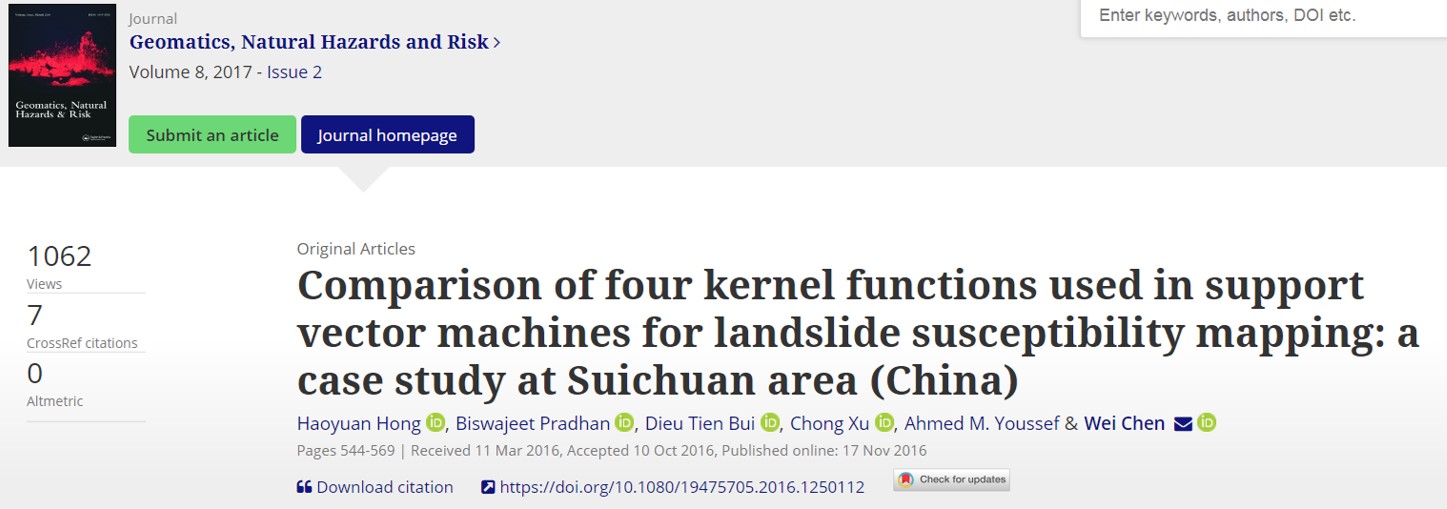Suichuan is a mountainous area at the Jiangxi province in Central China, where rainfall-induced landslides occur frequently. The purpose of this study is to assess landslide susceptibility of this region using support vector machine (SVM) with four kernel functions: polynomial (PL), radial basis function (RBF), sigmoid (SIG), and linear (LN). A total of 178 landslides were used to accomplish this approach, of which, 125 (70%) landslides were randomly selected for training the landslide susceptibility models, whereas the remaining 53 (30%) were used for the model validation. Fifteen landslide conditioning factors were considered including slope-angle, altitude, slope-aspect, topographic wetness index (TWI), sediment transport index (STI), stream power index (SPI), plan curvature, profile curvature, distance to rivers, distance to faults, distance to roads, precipitation, landuse, normalized difference vegetation index (NDVI), and lithology. Using the training dataset, nine landslide susceptibility models for the Suichuan area were constructed with the four kernel functions. To evaluate the performance of these models, the receiver-operating characteristic curve (ROC) and area under the curve (AUC) were used. Using the training dataset, AUC values for the SVM-PL models with six degrees PL function (1–6) are 0.715, 0.801, 0.856, 0.891, 0.919, 0.953, respectively, and for the SVM-RBF model, the SVM-SIG model, and the SVM-LN model are 0.716, 0.741, and 0.740, respectively. Using the validation dataset, AUC values for the SVM-PL models with six degrees PL function (1–6) are 0.738, 0.730, 0.683, 0.648, 0.608, and 0.598, respectively, and for the SVM-RBF model, the SVM-SIG model, and the SVM-LN model are 0.716, 0.741, and 0.740, respectively. Our results suggested that the SVM-RBF model is the most suitable for landslide susceptibility assessment for the study area.


